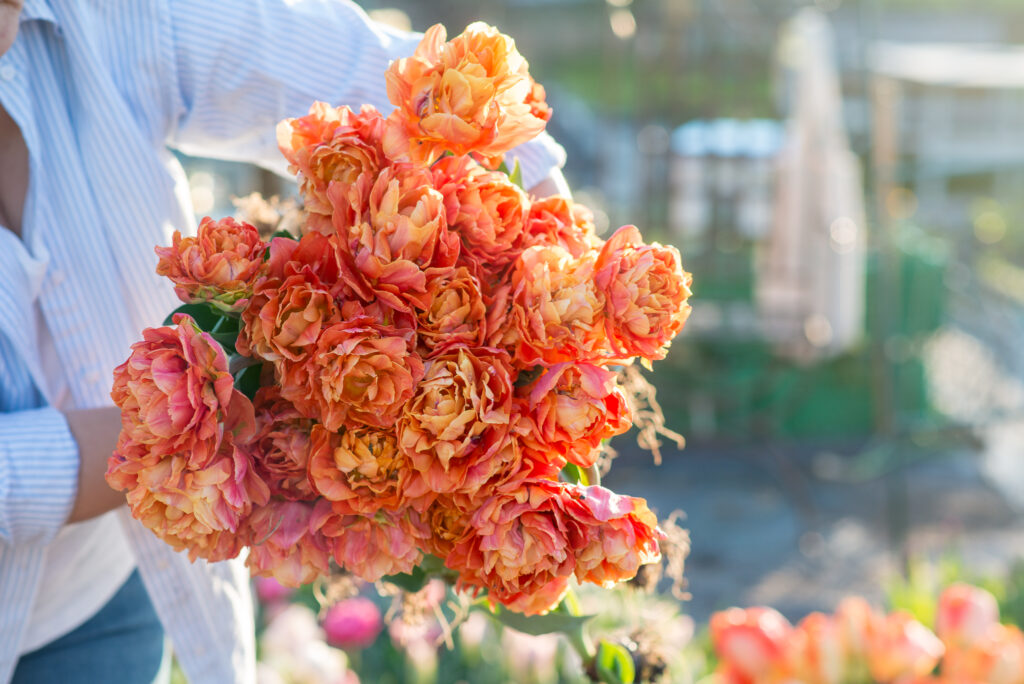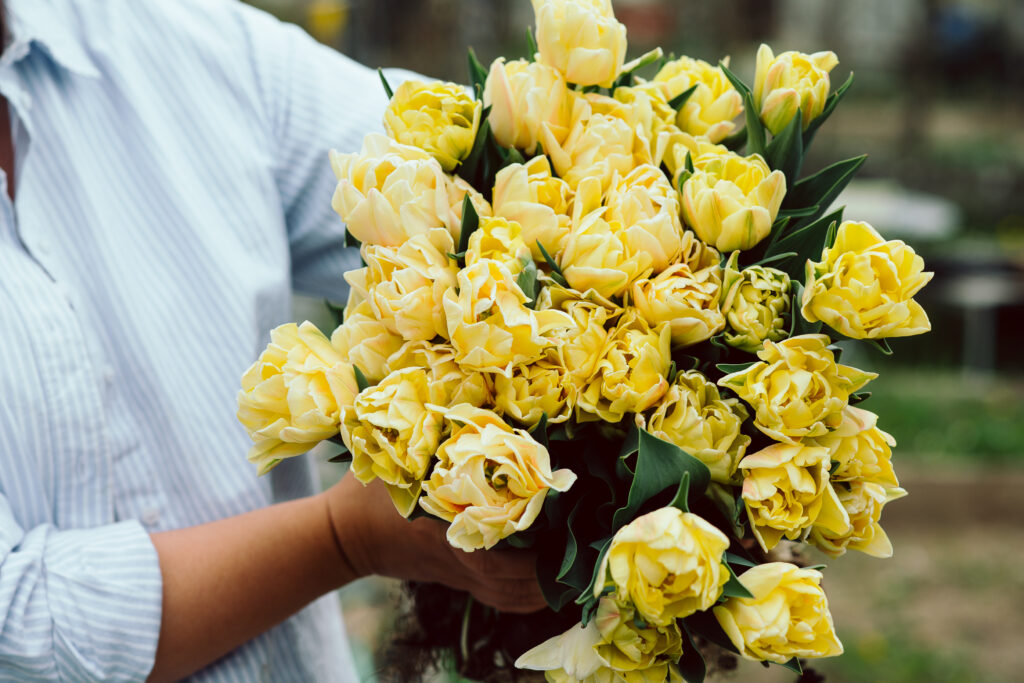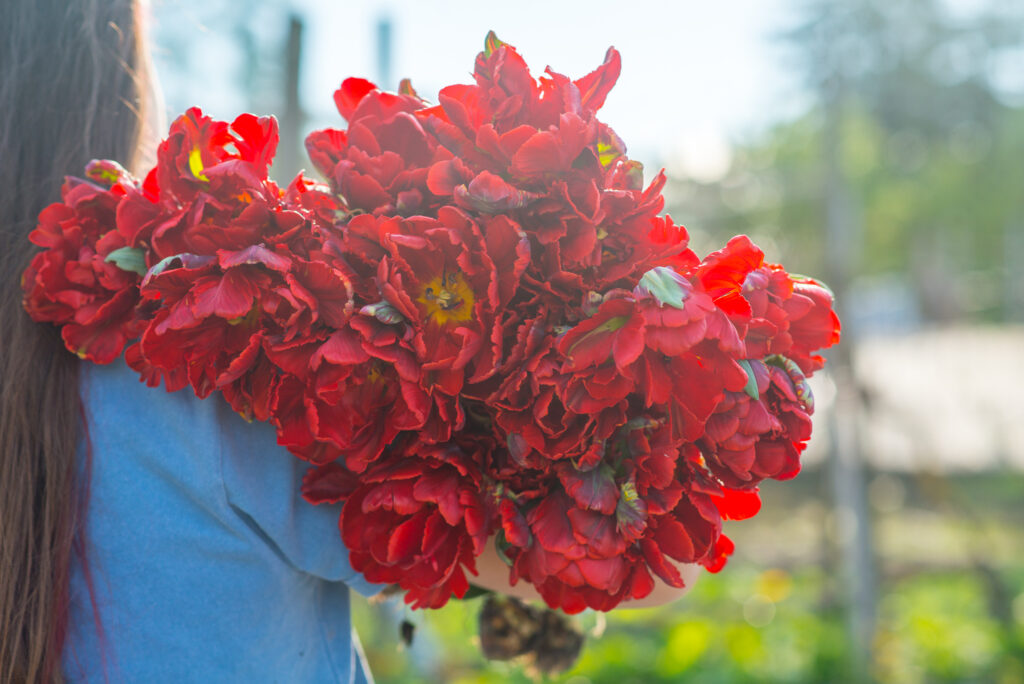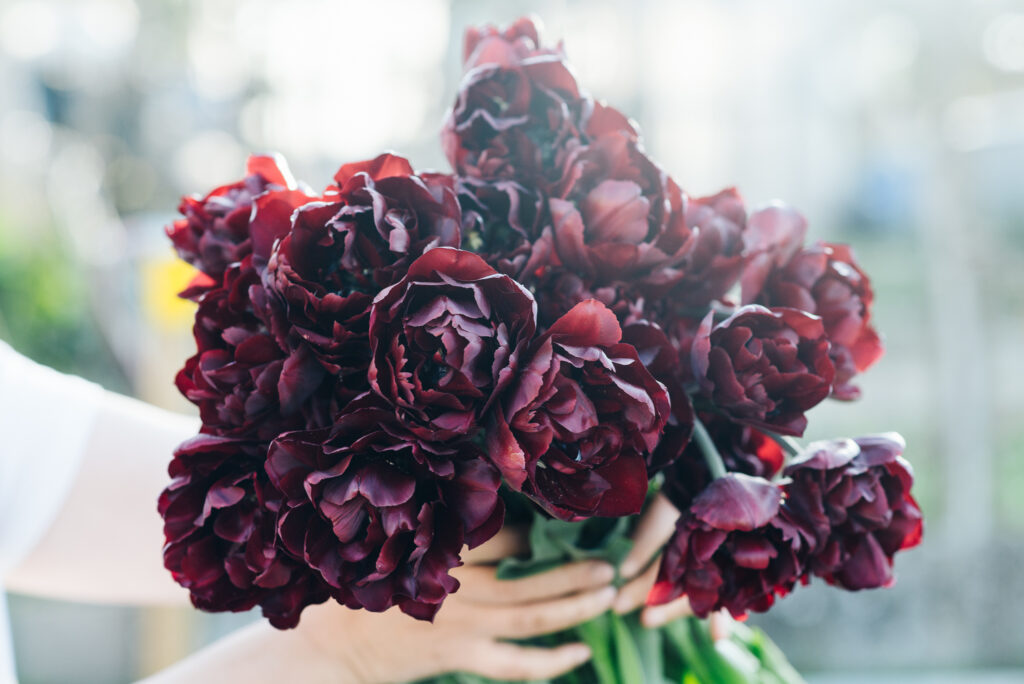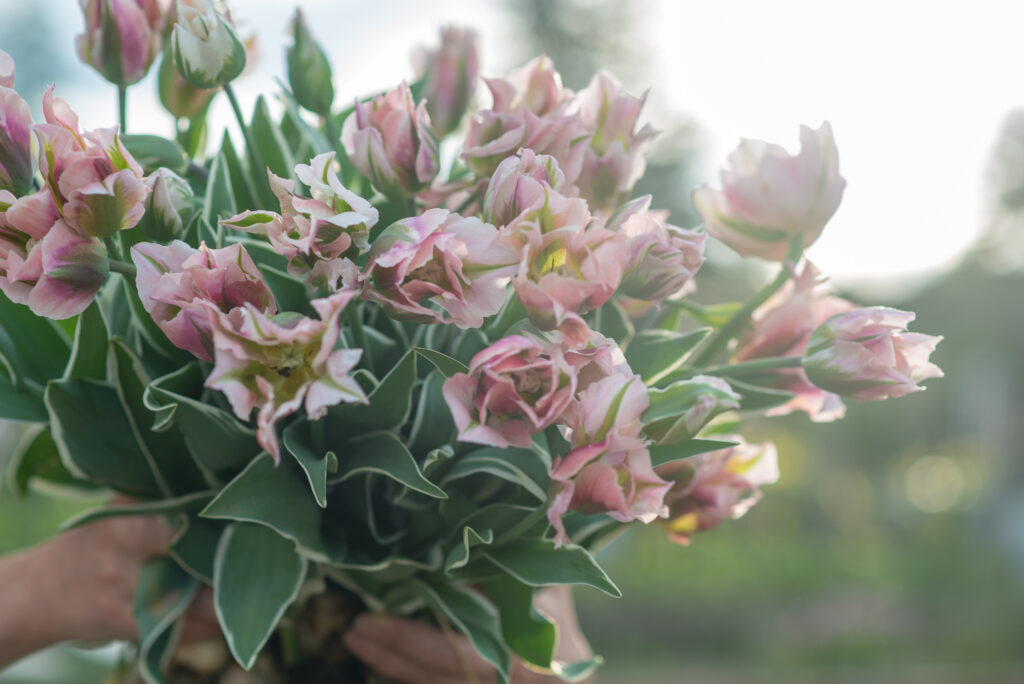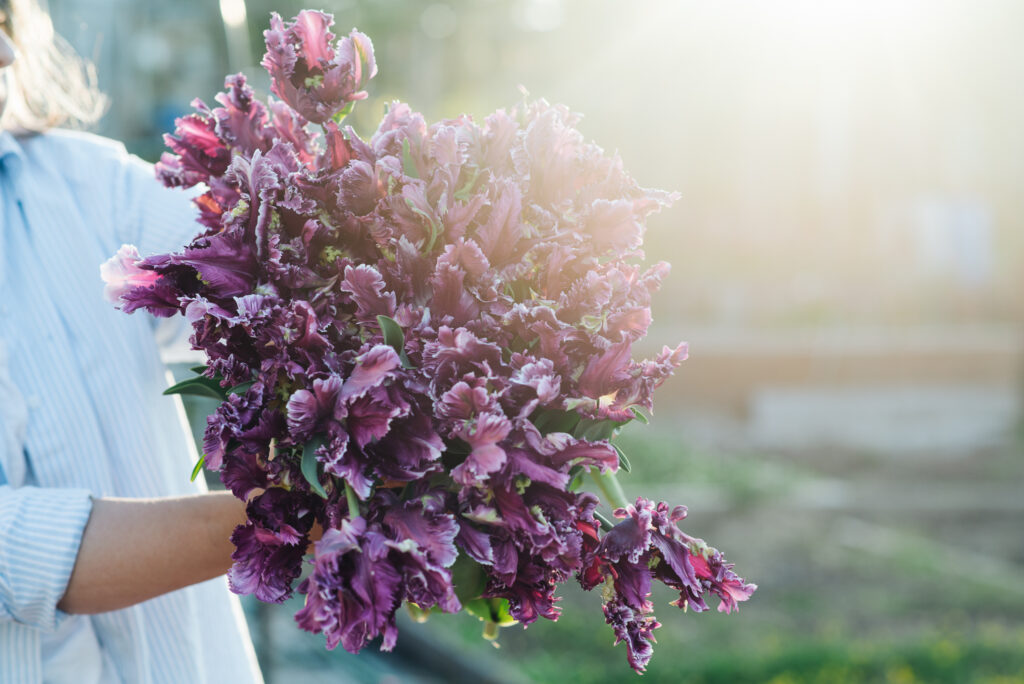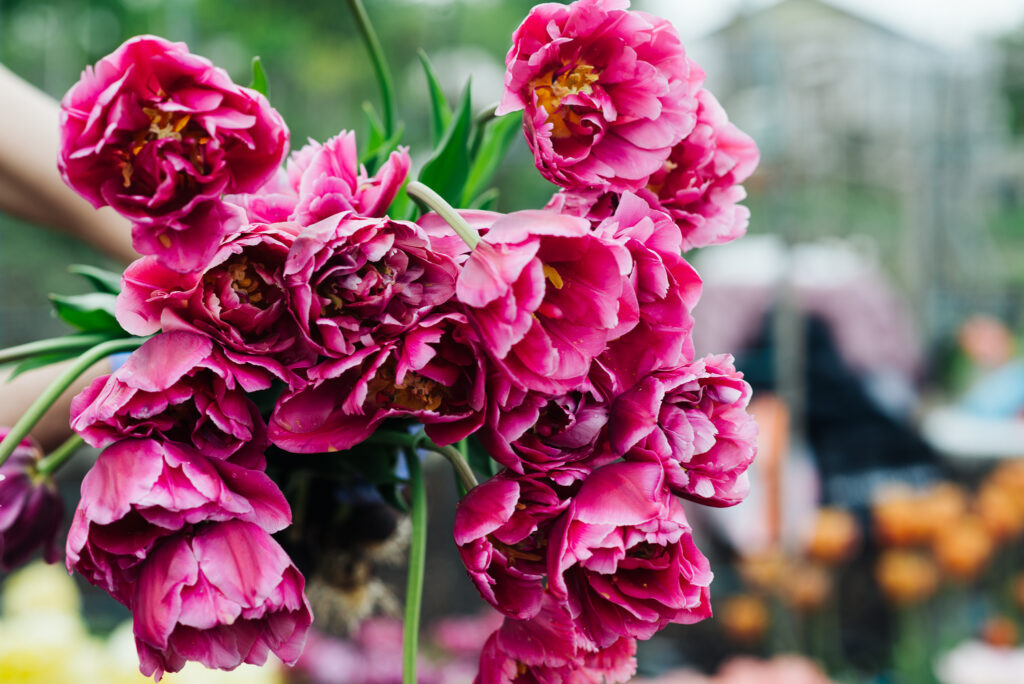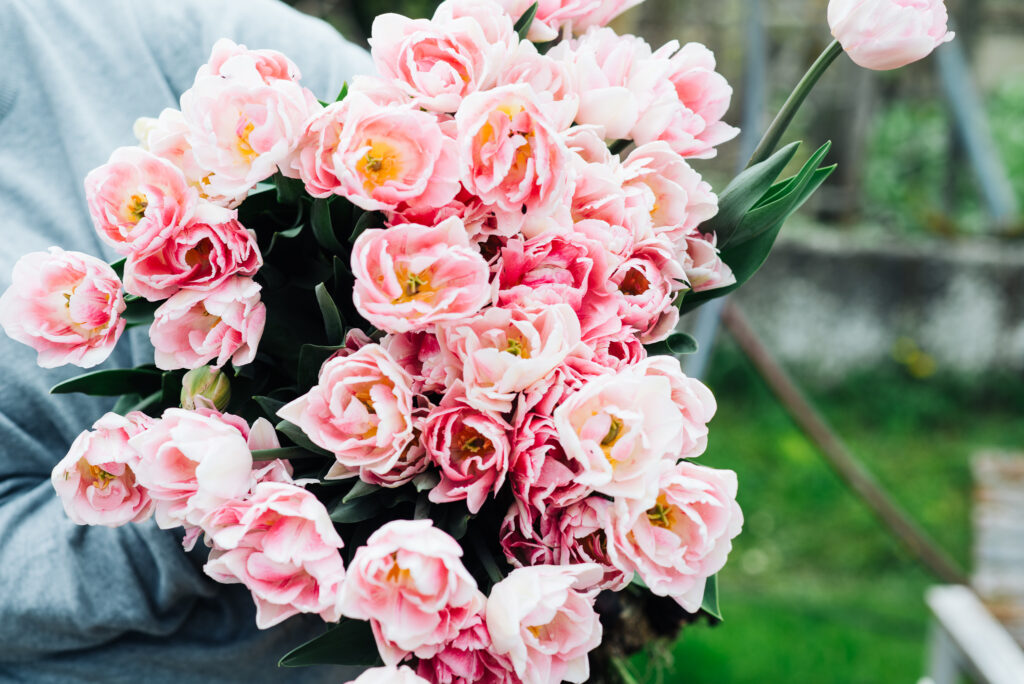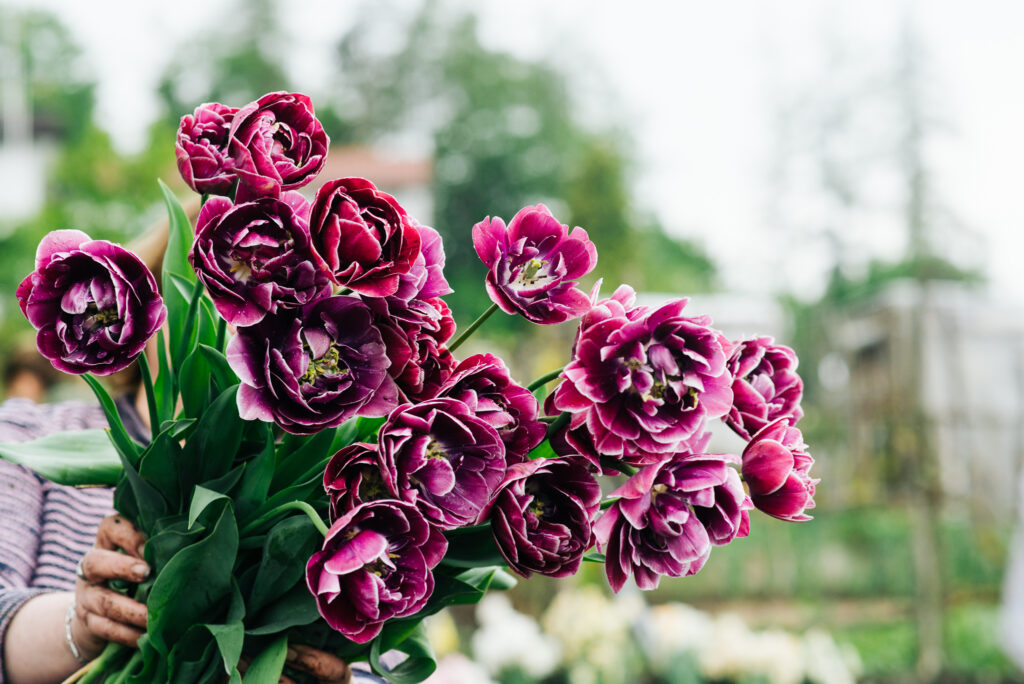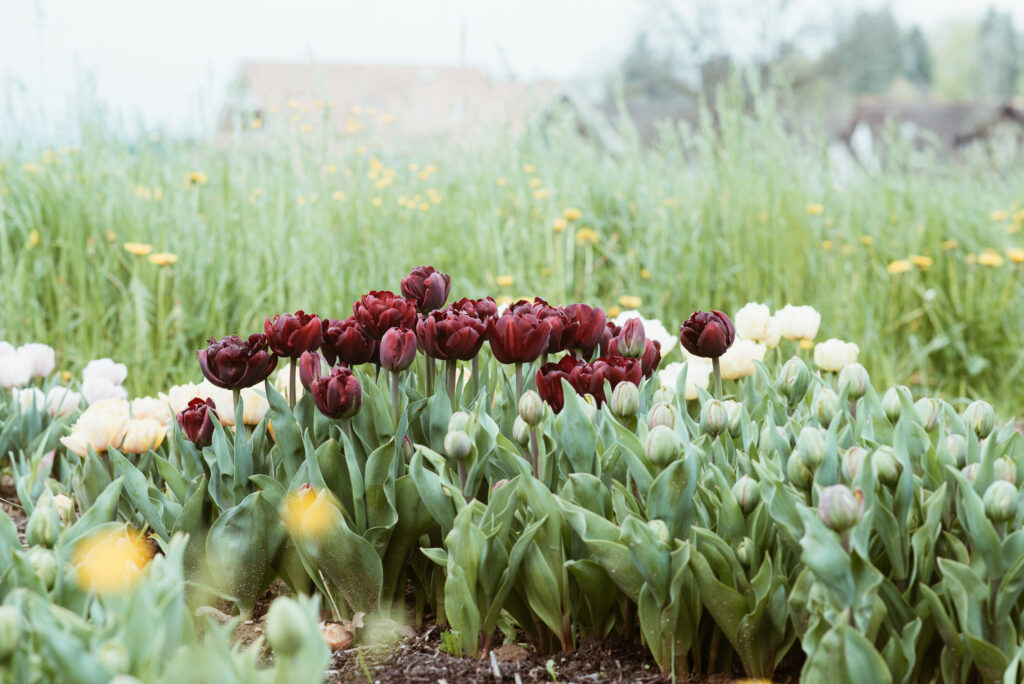Your cart is currently empty!
Author: Elina Neustroeva
-
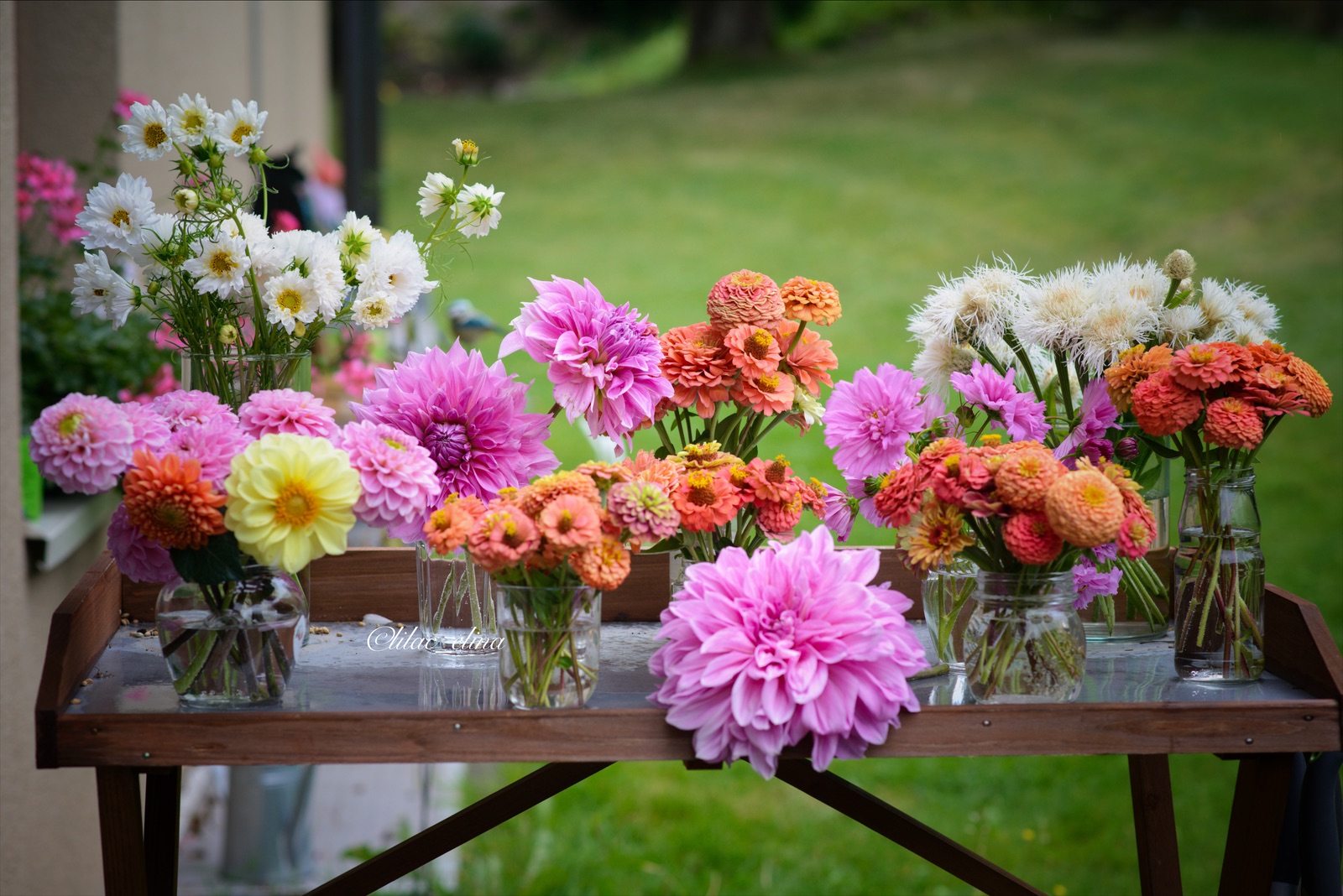
About Dahlias
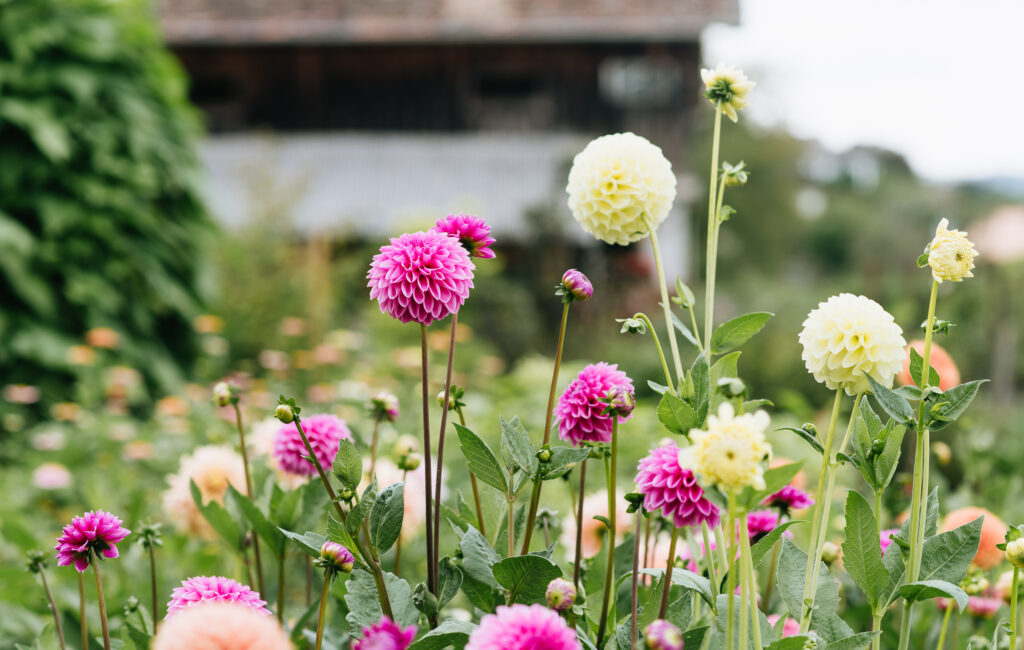
The homeland of dahlias is Mexico and Guatemala. Dahlias came to Europe in the 18th century and received two names. The Latin name DAHLIA was named after the famous Swedish botanist Anders Dahl. In Russia, the flower was called Dahlia in honor of the professor of the St. Petersburg Academy Johann Gottlieb Georgy, a botanist and geographer.
PLANTING
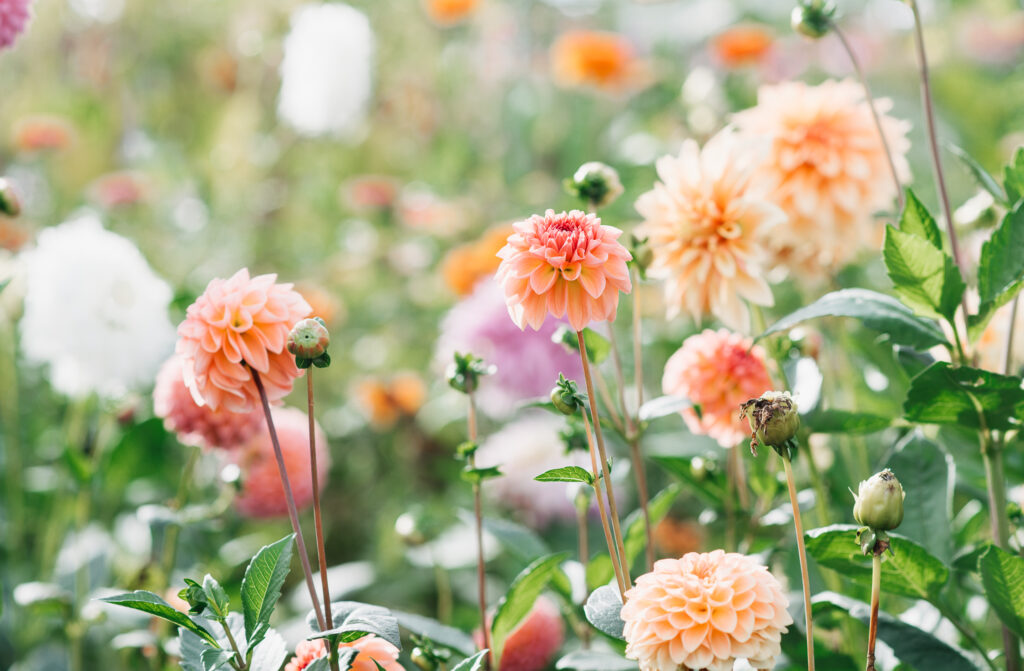
Dahlia bulbs are planted in the spring, after the last frosts have passed. Dahlias love warmth. When planting, choose the sunniest spot, provide a good water supply, but do not overwater and make sure that the soil does not dry out. It is best to water the plants late in the evening or early in the morning.
Plant the tubers at a depth of 10 cm and leave a distance of 30-40 cm between the tubers.
MAINTENANCE
Protect your plants from snails and slugs, which are particularly fond of the young leaves of dahlias. I have found an ecological method that has proven effective against these pests. I sprinkle shavings around the bulbs and place halved garlic cloves on top, which I refresh regularly. You can also apply garlic oil to the stems and shoots.
I don't use any special fertilizers for dahlias. When planting, I mix granulated cow's milk into the soil. manure.
As many gardeners know, pinching is essential if you want strong, long stems and abundant flowering. Dahlias are among the plants that require pinching at the tips of the shoots. When the plants reach 20-30 cm in height, use sharp pruning shears to cut off the top of the plants above the first or second row of leaves. This encourages branching, which in turn leads to more flowers and strong, long stems.
As they grow, Dahlias reach considerable size and have heavy flowers. Use supports to keep your plants upright during flowering and during adverse weather conditions.
FLOWER PICKING
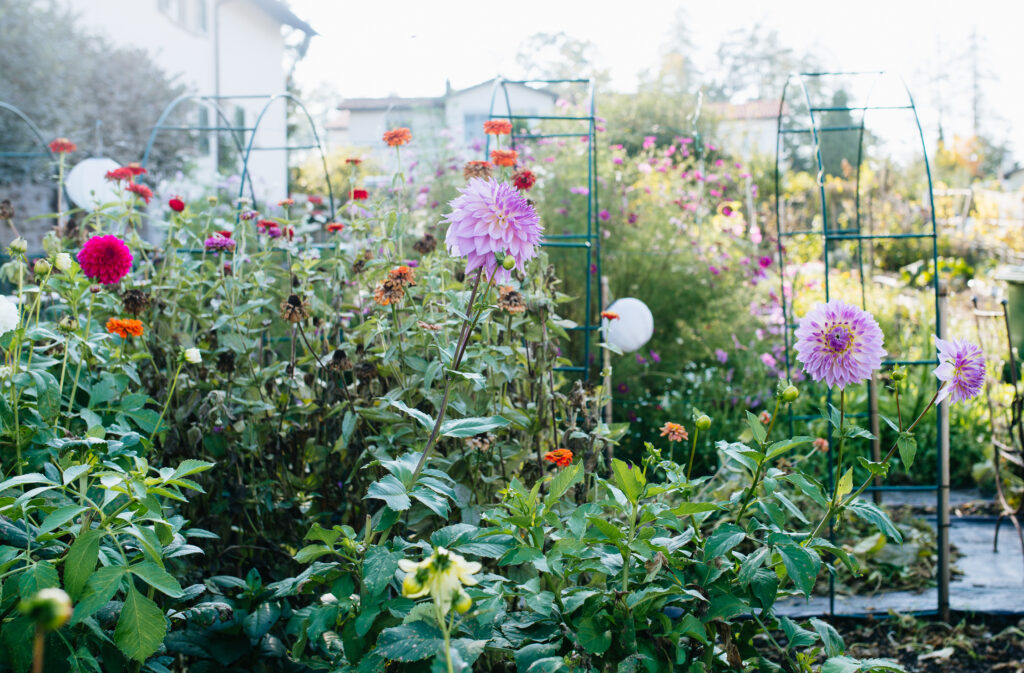
Dahlias bloom from midsummer until the first frost. Cut mature flowers regularly for your bouquets. This encourages more flowers to form. The best time to cut flowers is when it is relatively cool: early in the morning or late in the evening; when the flowers are fully open but the center has not yet been pollinated by insects. Then they can last a little longer in a vase.
DIGGING AND STORING TUBERS
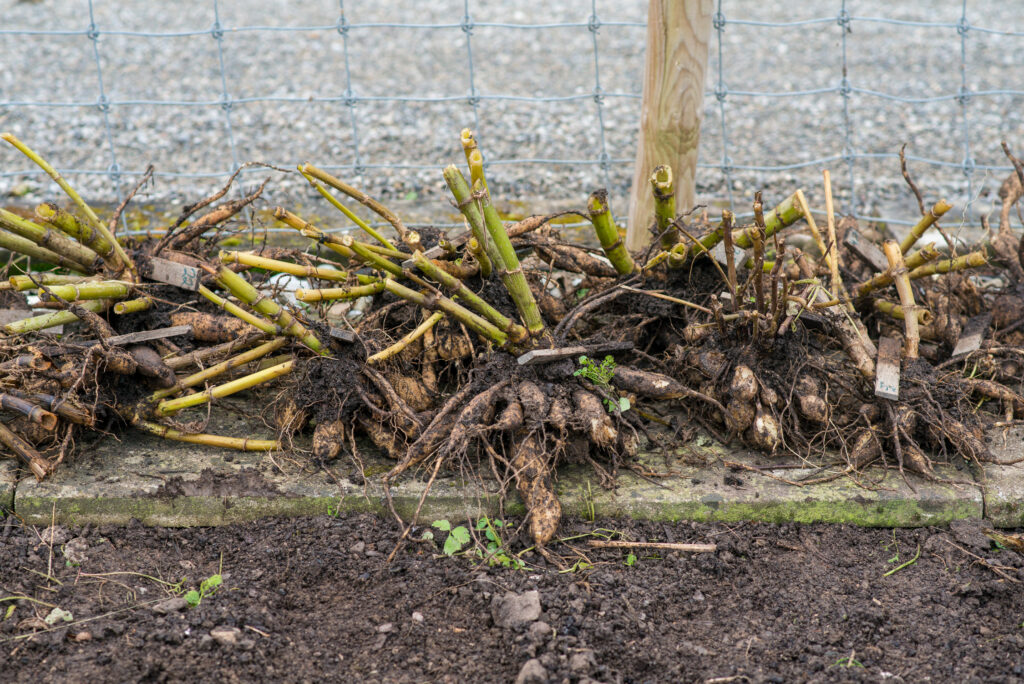
Dig up dahlia tubers with the first frosts (we dug them up in early November). Carefully loosen the soil with a pitchfork, lift and remove the tubers from the soil. Shake off the remaining soil from the tubers (we wash the tubers, but this is not necessary). Let the tubers dry, wrap each one in newspaper, sprinkle with shavings or vermiculite and put away for winter storage. It is best to store tubers at a temperature of +4-+10 C, in a cool, dry room. Do not forget to write down the names of the varieties when storing - this will make it easier for you to identify the varieties next year.
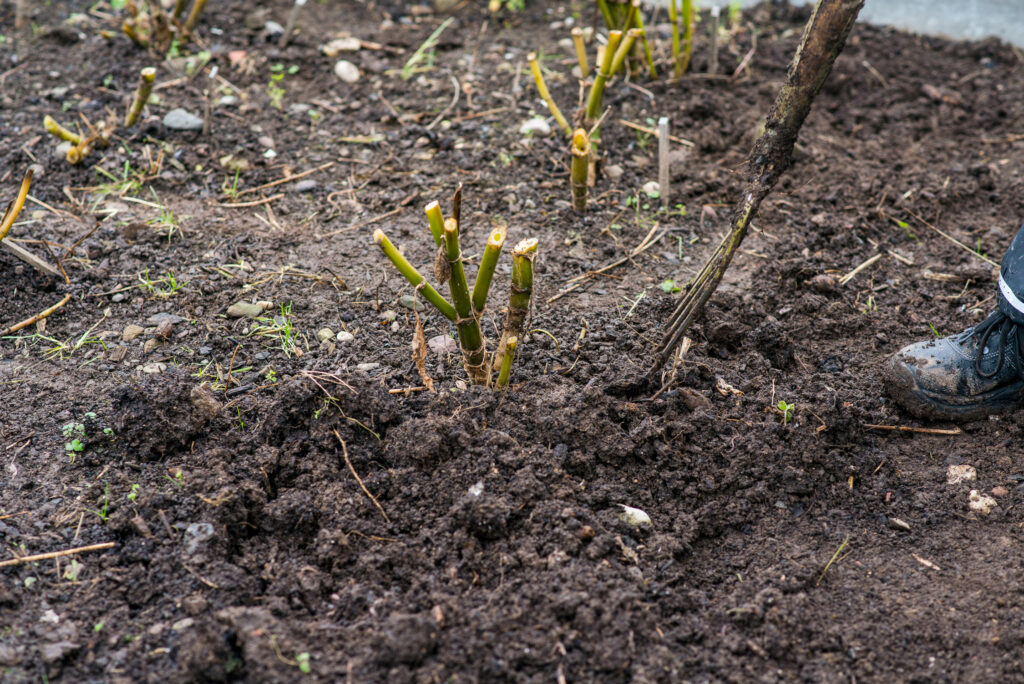

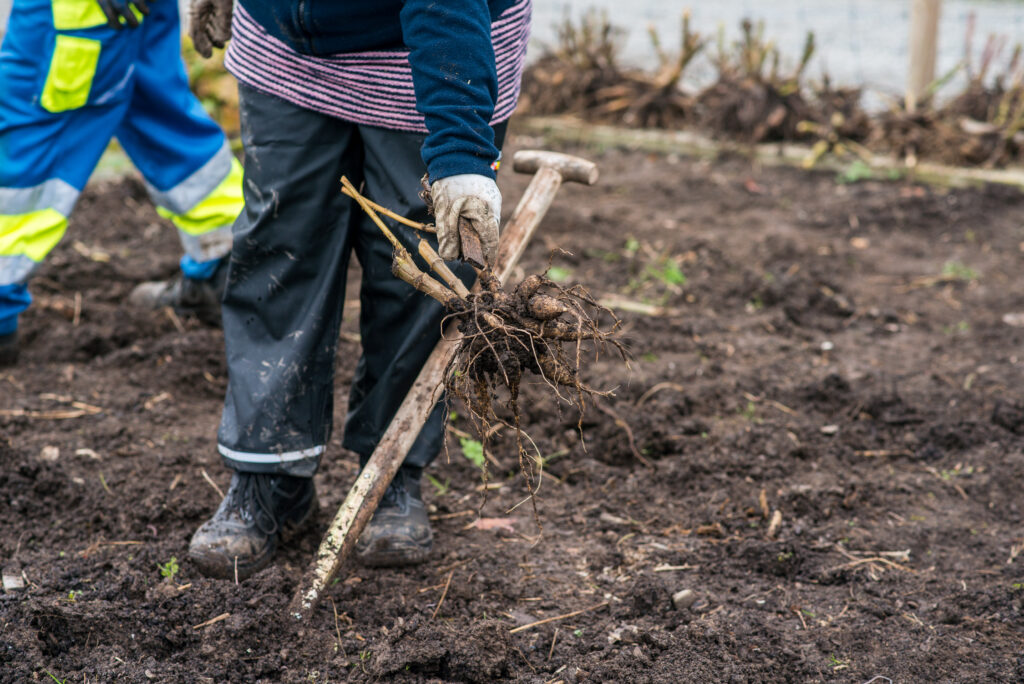
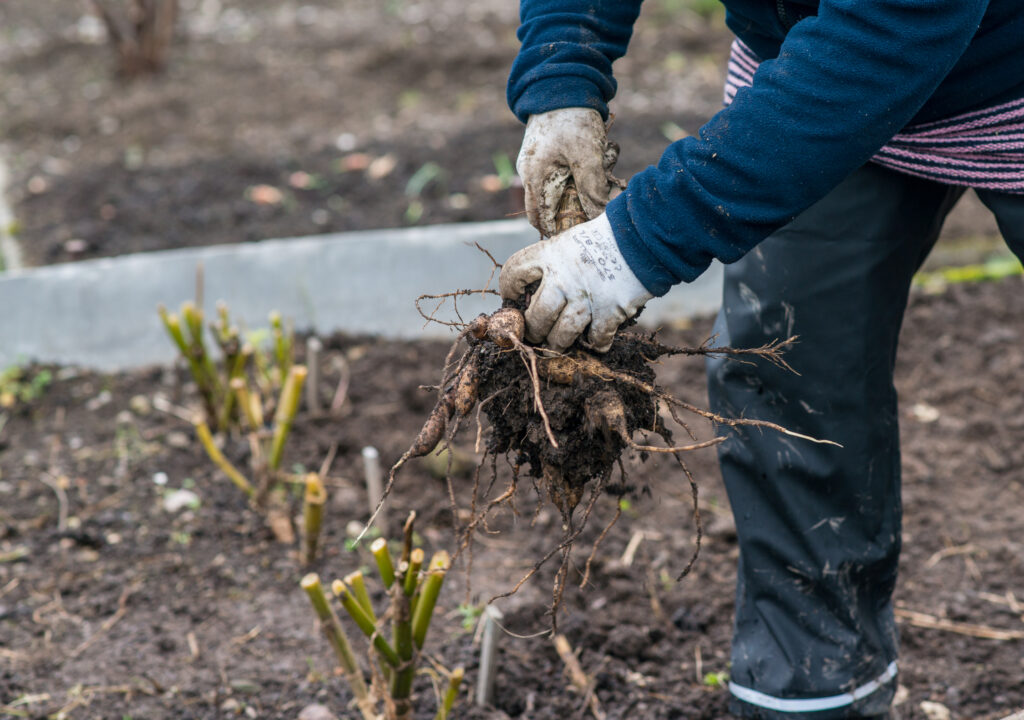
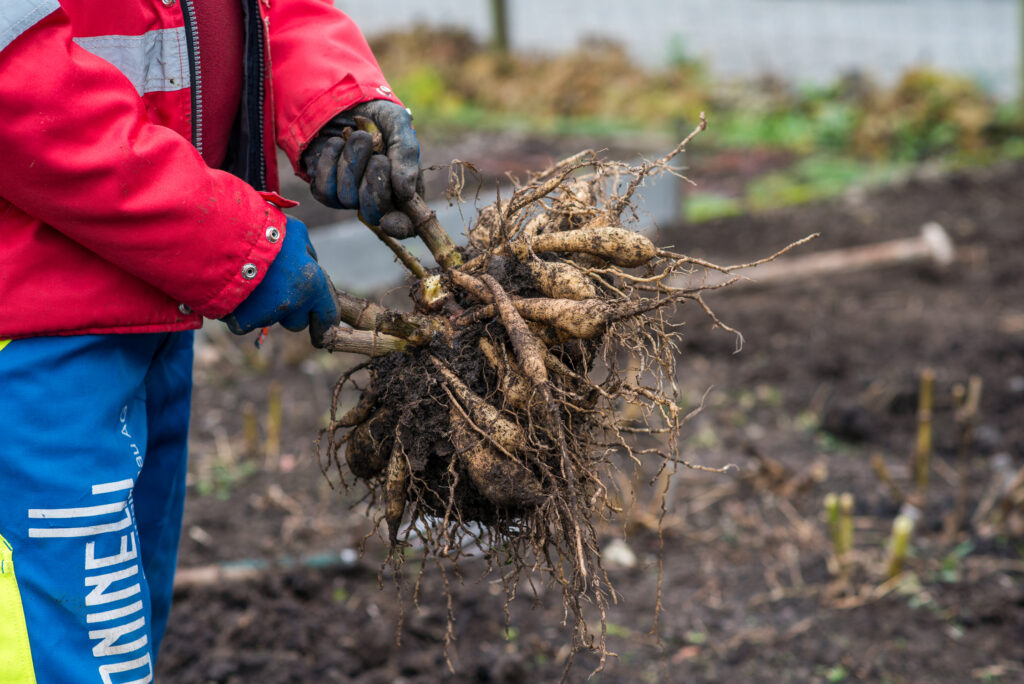
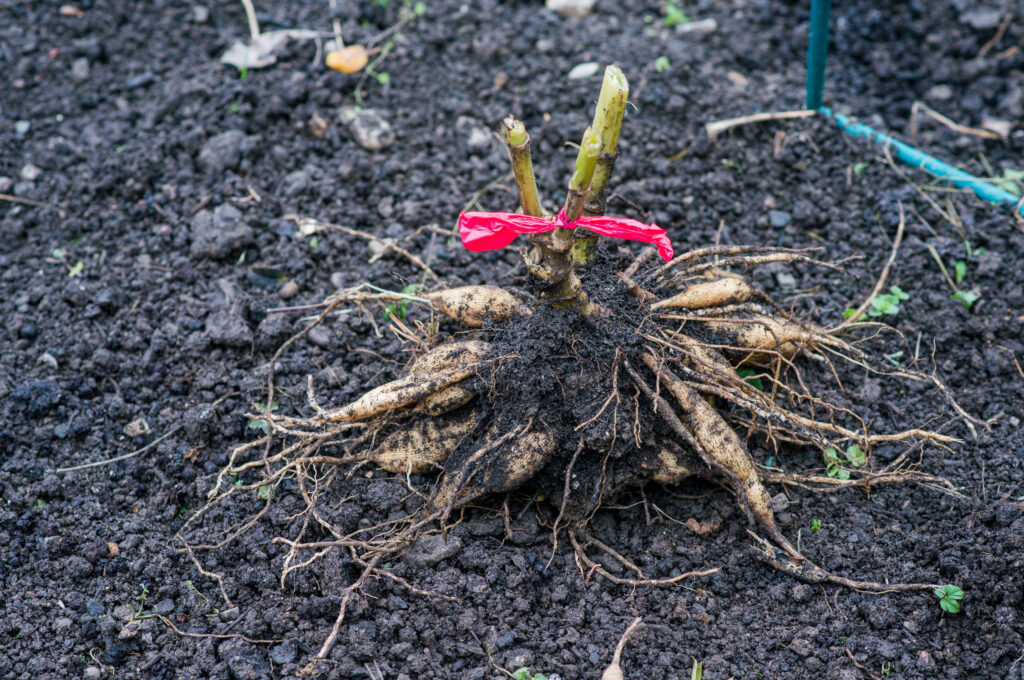
Good luck with your dahlias!
We will be happy to answer your questions if any. Just leave your comment below the article.
-
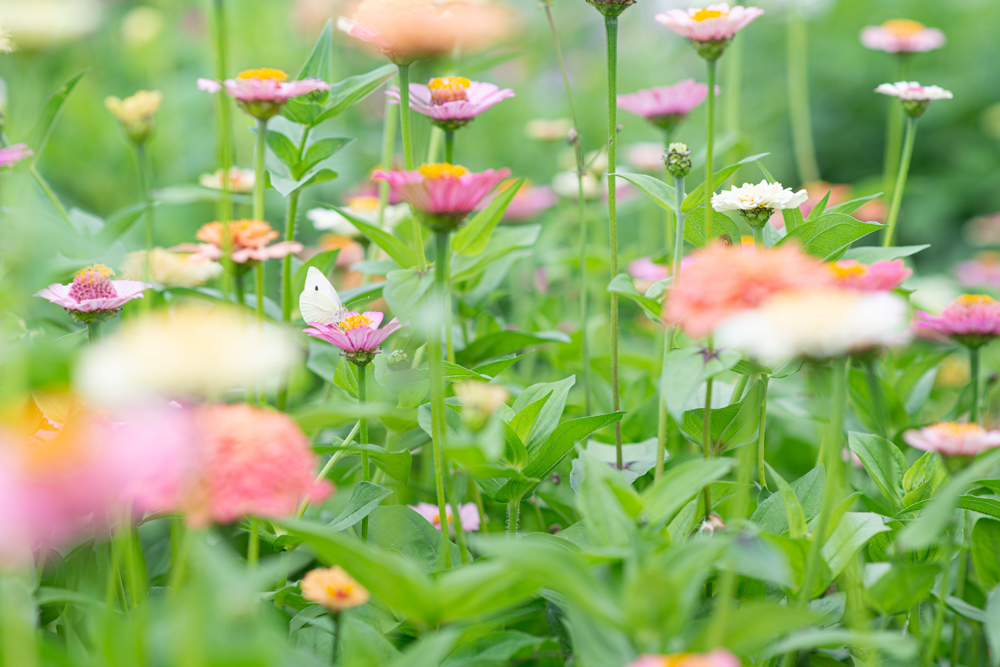
Professional premium quality rare variety rare flower seeds for your garden
We mainly specialize in easy-to-grow, easy-to-care-for varieties of flowers that are also ideal for cut flowers.
These flowers grace our gardens year after year. As cut flowers, they are the real gems of bouquets.

A bouquet of zinnias 
A bouquet of cornflowers 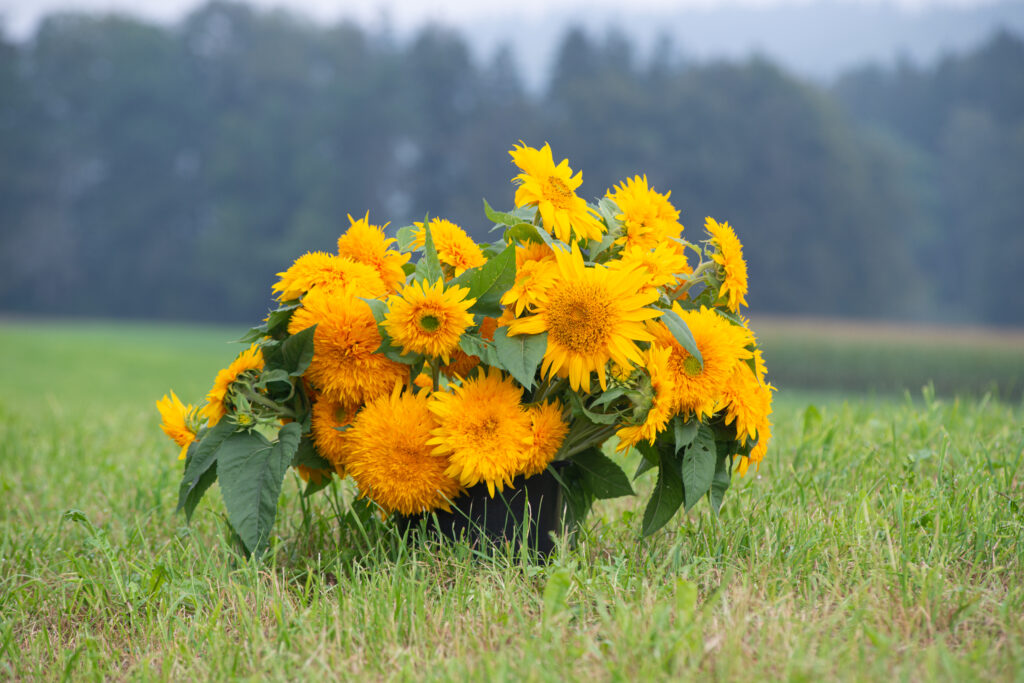
A bouquet of sunflowers 
A bouquet of cosmos 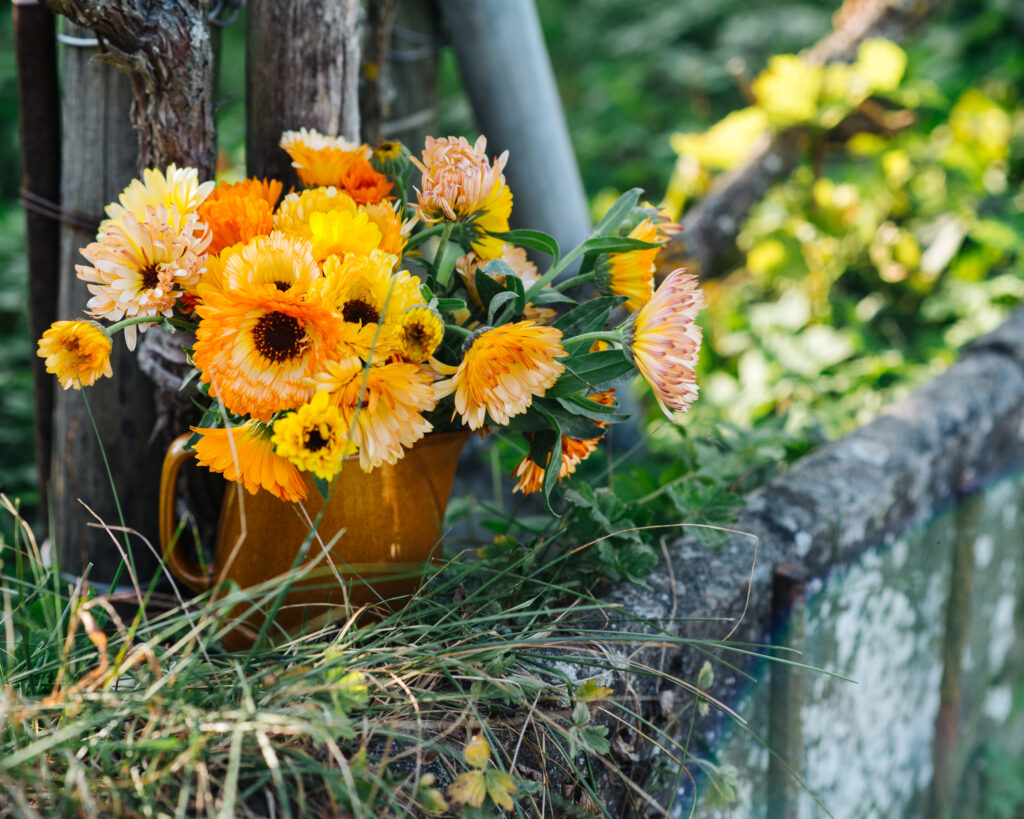
Marigold bouquet We share the view that everyone can grow their own garden and design it according to their own vision.
We are happy to be able to support you on the path to your dream garden with our online store and offer seeds of unique, not-so-common, beautiful flowers.
Seeds of these flowers - an unforgettable gift, because the received flowers will certainly remind of you to your family and friends and their enchanting beauty will encourage them to find or rediscover the joy of gardening.
All our flower seeds are
- high quality seeds with high germination
- We offer seeds of only those flowers with which we have had personal experience and can confirm the quality of the seeds from our own experience.
They grow from our seeds:
- flowers ideal for beginning gardeners
- easy to grow and care for flowers
- original varieties of flowers familiar from childhood
- flowers adored by beneficial insects
- flowers that look spectacular in the garden, ideal for bouquets
- many varieties belong to the group of flowers cut again and again, the more flowers you collect, the more new ones will bloom
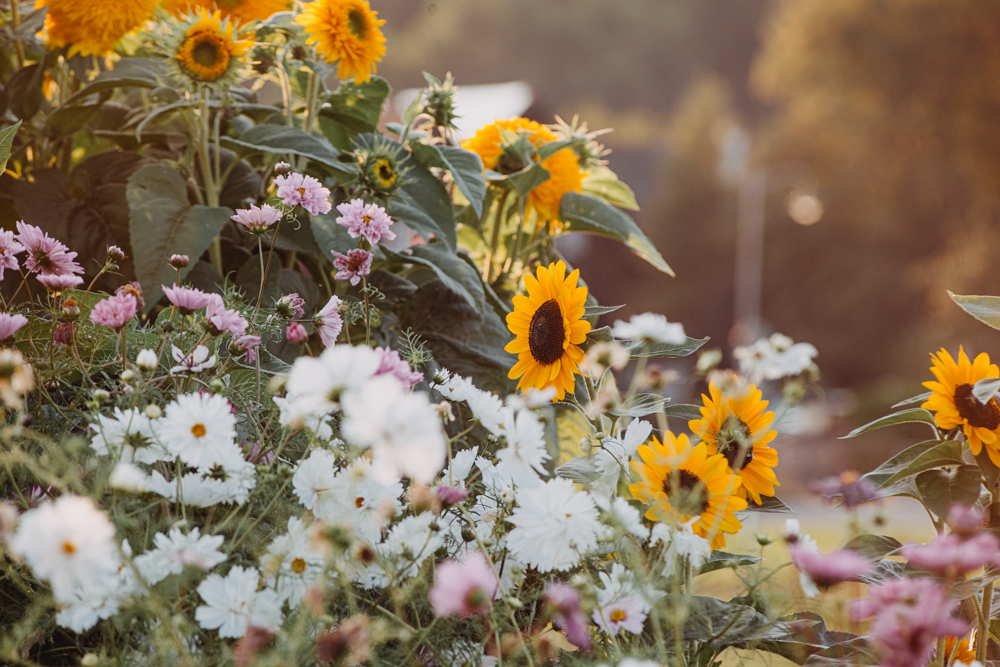
Such simple flowers as, amaranth, cornflowers, calendula, cosmos, sunflowers, zinnias will surprise you with atypicality of forms and variety of shades.
Once these flowers enter your garden, they will remain faithful companions because they will also hold a place in your heart.
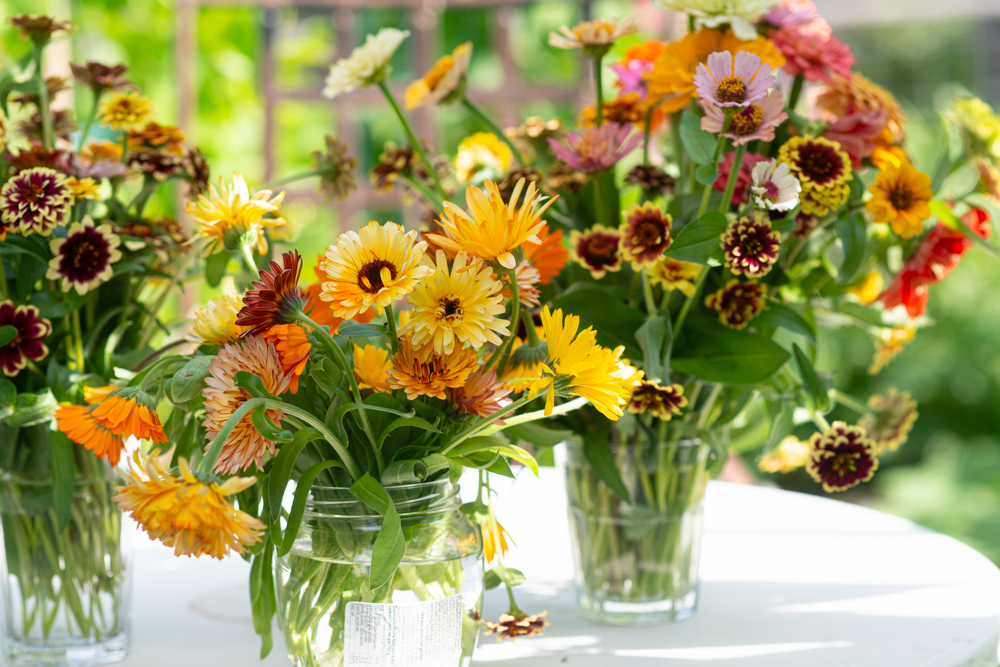
We wish you successful planting! May your garden delight you with its beauty and lush flowering!
We will be happy to answer your questions if any. Just leave your comment below the article.
* Blumenhof Engel accepts no liability for failure and/or damage resulting from incorrect and/or unqualified cultivation by or on behalf of the purchaser.
-
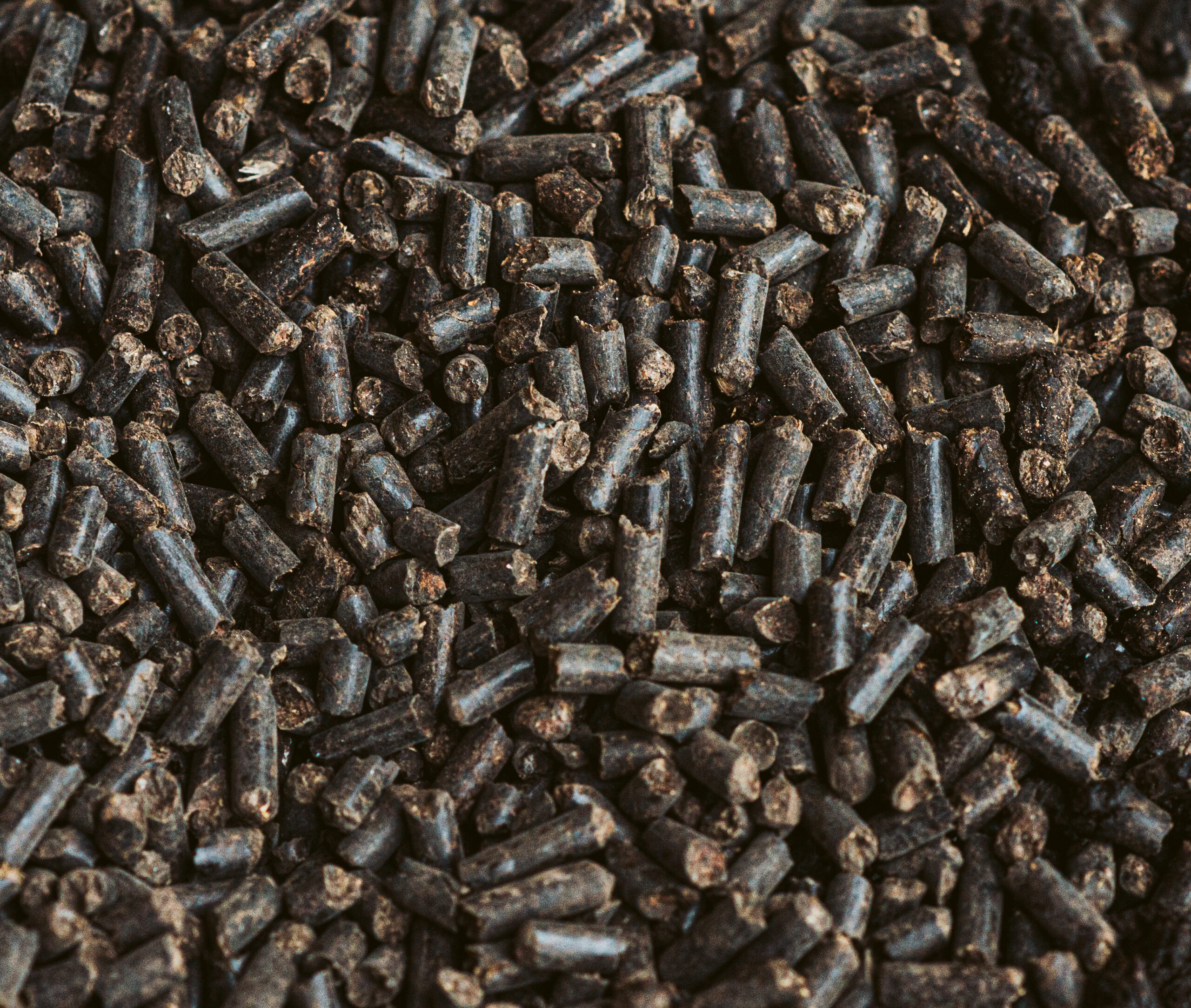
About fertilizer
I am often asked what fertilizers I use in my garden. Here I would like to answer this question and give some advice.
Twice a year, in spring and fall, I fertilize the soil with dried granulated cow manure. When fertilizing, I follow the instructions on the package.
Tip: Read the weather forecast before fertilizing. So, you can use the forecast for the coming days to choose the day on which rain is predicted. I try to fertilize in the rain. Then the nutrients are more easily absorbed by the soil. You're also saving water. This product is suitable for my current circumstances. I don't use any other fertilizer.
Cow manure in pellets:

Gently dried domestic cow manure contains 100% natural ingredients. Cow manure is particularly versatile and beneficial for soil structure. It promotes the biological activity of the soil and helps to create a good soil structure.
It is used for fertilizing vegetable crops, annual plants, perennials (e.g.: peonies, roses) and shrubs.
I also use the pellets when planting plants in pots or containers. I simply add a handful or two or three, depending on the volume of the container.
Follow the link to the manufacturer's website, for more information: https://www.hauert.com/ch-de/angebot/privatkunden/produkte/detail/kuhmist-10-kg
Chicken manure in pellets:

Follow the link to the manufacturer's website, for more information: https://www.hauert.com/ch-de/angebot/privatkunden/produkte/detail/huehnermist-10-kg
or

https://www.landi.ch/shop/gartenduenger_100203/huehnermist-10kg-capito_93191
Horse manure in pellets:
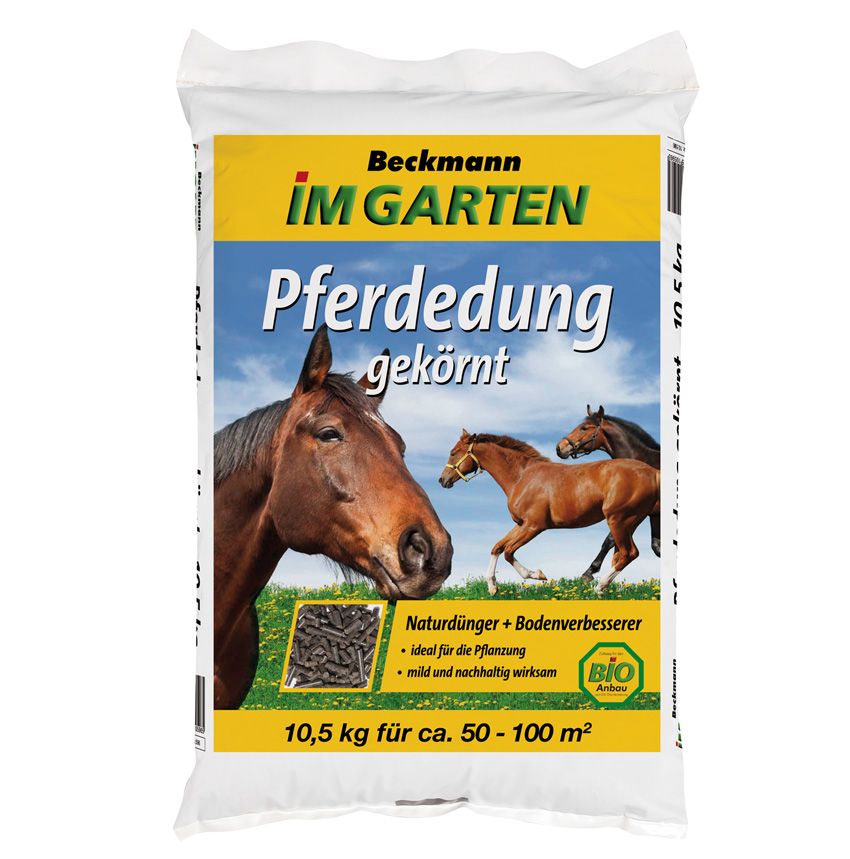
Follow the link to the manufacturer's website, for more information: https://beckhorn.de/produkt/pferdedung-gekoernt/
The difference between farm fresh manure and pelletized manure:
Fresh manure:
untreated cow, chicken or horse manure obtained directly from the farm is definitely better, but has its own nuances. The disadvantage of fertilizing with farm manure is primarily the smell and handling. Not everyone likes dealing with fresh manure, even with gloves on. In addition, fresh manure should not be spread directly on plants, as ammonia can cause burns to plants.
Dried, neatly pelleted manure:
pellets are easy to spread in the garden and they smell nice. Pellets are a good alternative if you do not feel comfortable spreading fresh manure, but do not want to miss out on its positive properties.
Follow the link to the manufacturer's website, for more information: https://www.hauert.com/ch-de/angebot/privatkunden/ratgeber/detail/richtig-duengen-mit-mist
All of the above items can be purchased at garden centers or online garden stores. Fresh manure can be asked directly from farms.
*This article is not an advertisement and is not intended to commercially promote the products mentioned above.
-
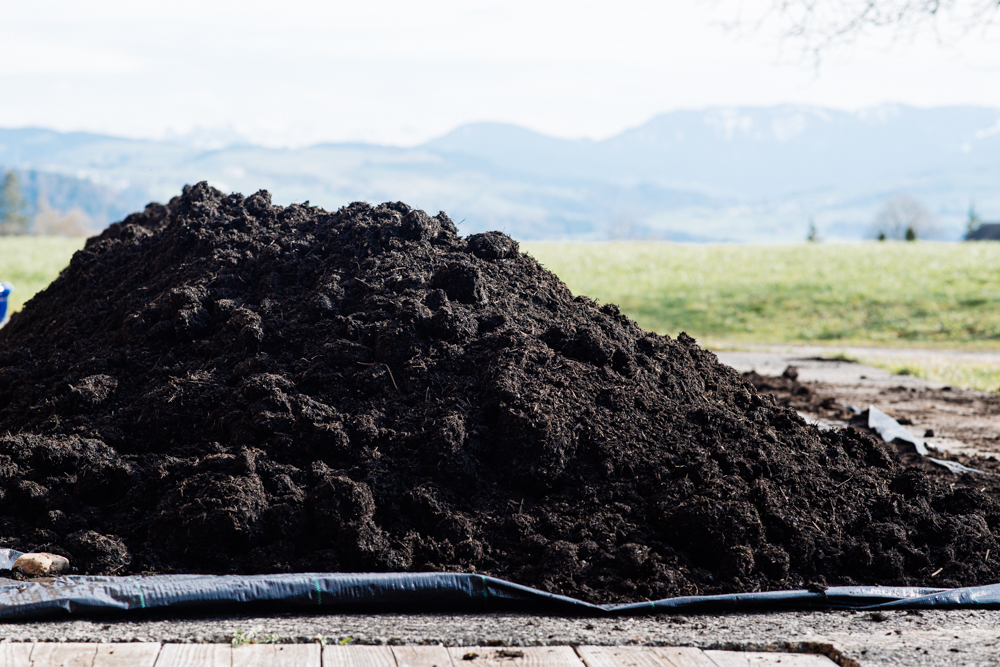
About compost

We collected our first compost ourselves and brought it in bags.
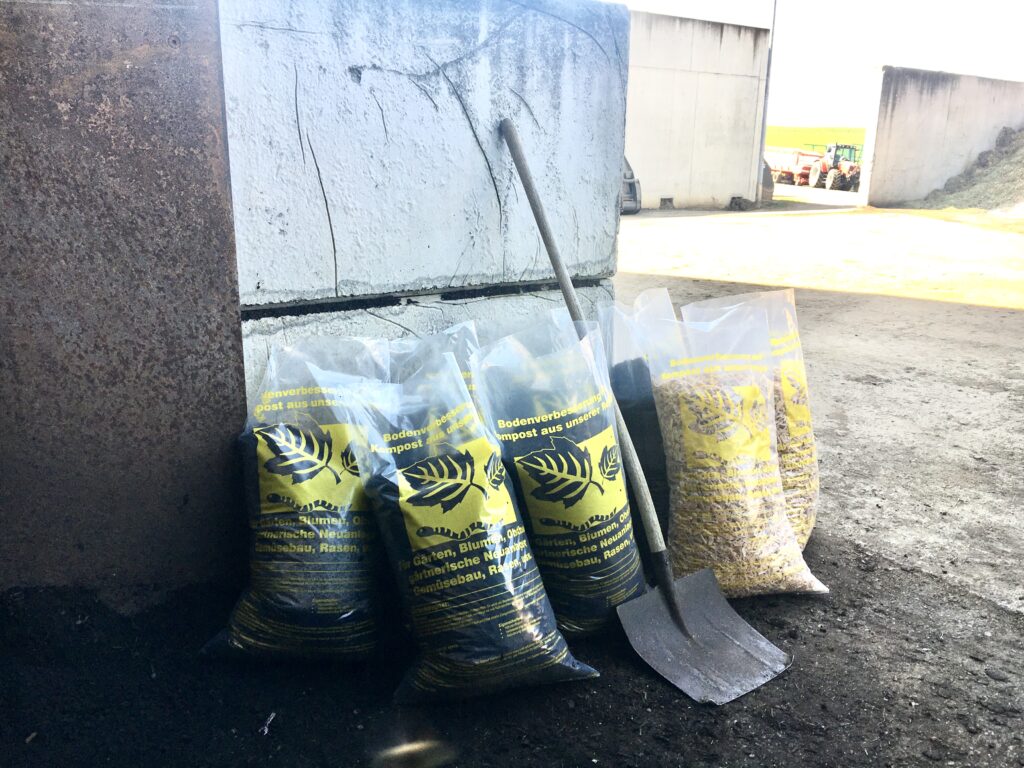
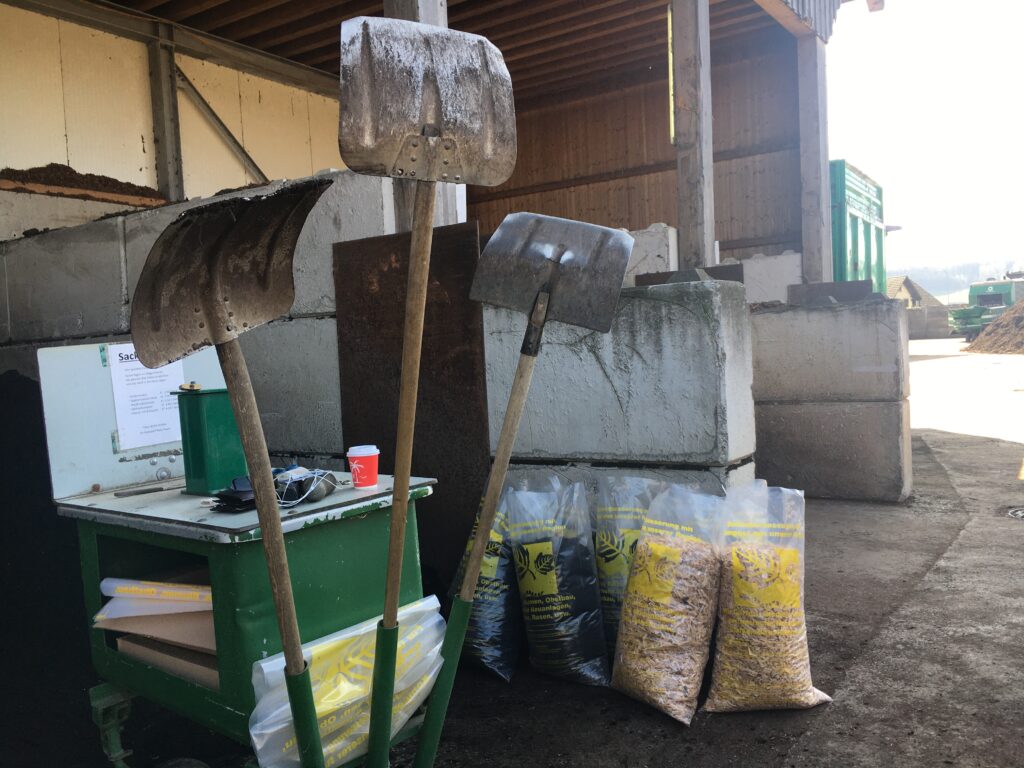
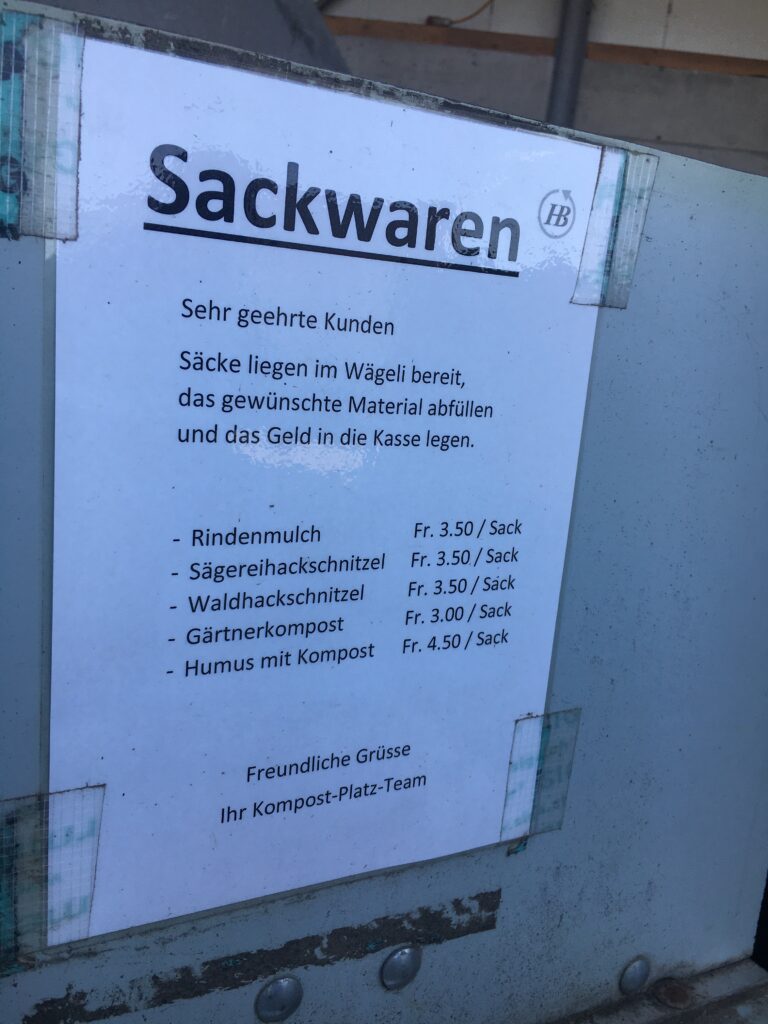
I prefer fresh farm compost. I add it to the soil twice a year, in the fall and spring.
I order from https://www.haab-bossert.ch
*This article is not an advertisement.
-
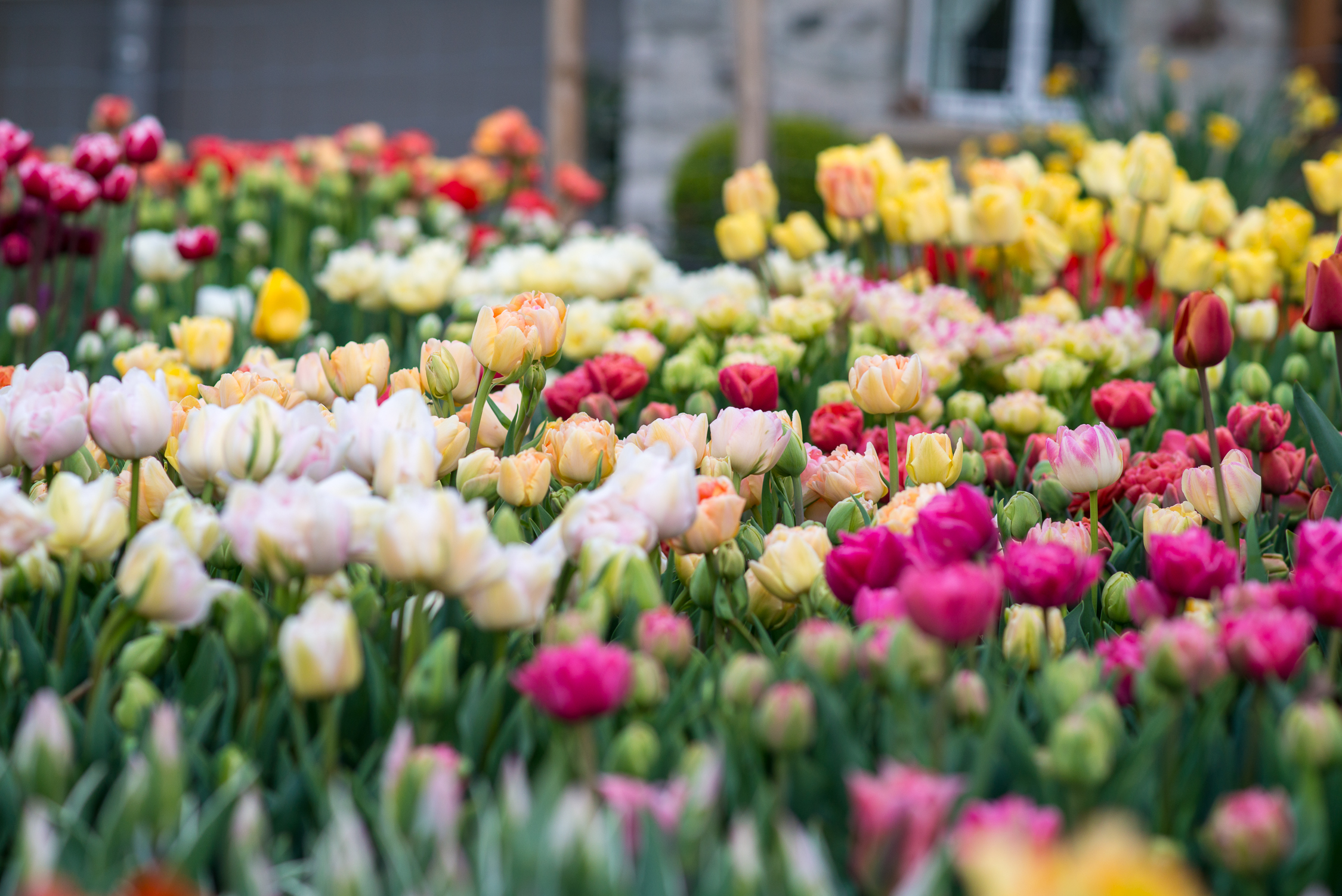
My favorite tulips
Tulips are the soul of spring!
I have been fortunate to grow many unusual varieties of these enchanting flowers. It is with great pleasure that I present my favorites.